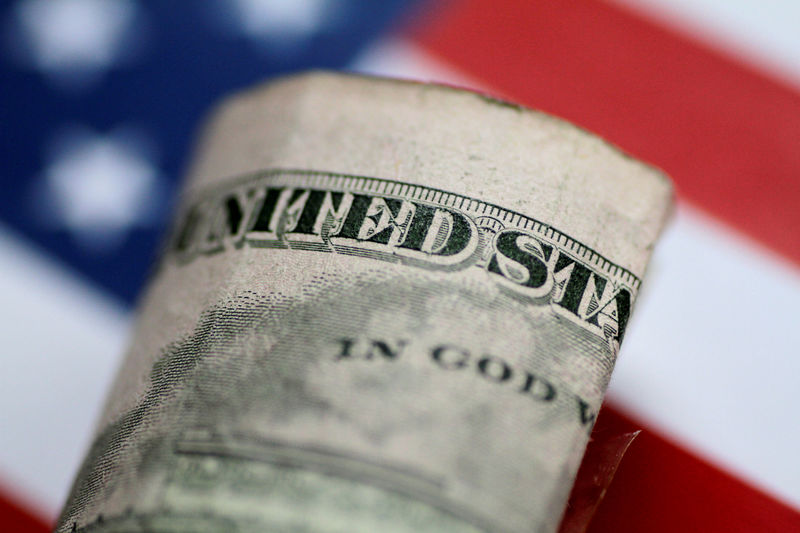Street Calls of the Week
Investing.com - The U.S. dollar slipped marginally lower Thursday, but was on track for its first monthly gain this year after Federal Reserve Chair Jerome Powell offered hawkish commentary following the central bank’s policy meeting.
At 03:00 ET (08:00 GMT), the Dollar Index, which tracks the greenback against a basket of six other currencies, dropped 0.1% to 99.550, near two-month highs and on course to post a monthly gain of over 3%, the first this year.
Dollar gains on hawkish Powell
The Federal Reserve held interest rates unchanged at the end of its two-day policy meeting on Wednesday, with the central bank citing a "low" unemployment rate, "solid" labor market conditions and "somewhat elevated" inflation.
Powell stuck to his patient approach on rates and offered little insight on when they could be lowered, even in the face of U.S. President Donald Trump’s constant demands for rate cuts.
“Chair Powell’s press conference was hawkish,” said analysts at ING, in a note. “He reiterated expectations for a short-lived inflationary impact and said a modestly restrictive policy was appropriate. He seemed to put himself on a collision course with President Trump by claiming the Fed was looking through inflation by not hiking.”
CME 30-Day Fed Fund futures now reflect just a 45.7% probability of a rate cut in September, down from 63.4% prior to the release of the statement.
There was dissent within Fed rate-setters to Powell, with Governors Christopher Waller and Michelle Bowman -- both Trump appointees -- voting for a 25-basis point rate reduction this month. The officials pointed to worries over a slowing labor market as evidence for a cut.
A measure of private payrolls came in ahead of expectations on Wednesday, suggesting some resilience in the jobs market. More labor data is due out this week, including the all-important nonfarm payrolls report for July on Friday.
“Another data point worth noting is jobless claims, which have recently caught our attention after an unexpected six-week streak of declines. That’s the longest run since August-September 2022, and may be contributing to expectations of a resilient labour market,” ING added.
Euro heads for hefty monthly loss
In Europe, EUR/USD gained 0.4% to 1.1447, edging higher after sliding to a seven-week low in the previous session. Still, the single currency remained on track to lose nearly 3% for the month.
French consumer prices rose slightly more than anticipated in July, with the harmonised inflation rate, adjusted for comparison with other eurozone countries, rising 0.9% year-on-year in July, above the 0.8% expected.
The eurozone economy grew slightly faster than expected in the second quarter, but growth remains meager and the world’s second-largest economic bloc will have to cope with U.S. tariffs going forward.
“If the first leg of the EUR/USD correction was driven by the grim growth prospects for the eurozone after the EU-US trade deal, the drop to 1.14 was led by the Fed’s hawkish repricing,” said ING.
“In our view, risks remain on the downside for EUR/USD, even though positioning is now looking considerably less stretched after the squeeze of dollar shorts since the start of the week.”
GBP/USD rose 0.1% to 1.3253, with sterling trading near a 2-1/2-month low, and was also heading for a monthly decline of nearly 3%.
BOJ lifts inflation, growth forecasts
Elsewhere, USD/JPY traded 0.2% lower to 149.28, after the Bank of Japan left interest rates unchanged, as widely expected.
The central bank also hiked its consumer price index inflation and gross domestic product forecasts for the year, with core inflation now seen well above prior forecasts.
The central bank also warned that real interest rates still remained low, and that it will hike rates further if inflation and growth rise in line with its expectations.
AUD/USD rose 0.5% to 0.6466, recouping a measure of overnight losses, while USD/CNY traded largely unchanged at 7.1931, after purchasing managers index data for July underwhelmed.
Manufacturing PMI shrank more than expected in July, as did non-manufacturing PMI, with the drop being attributed to the impact of extreme weather.
